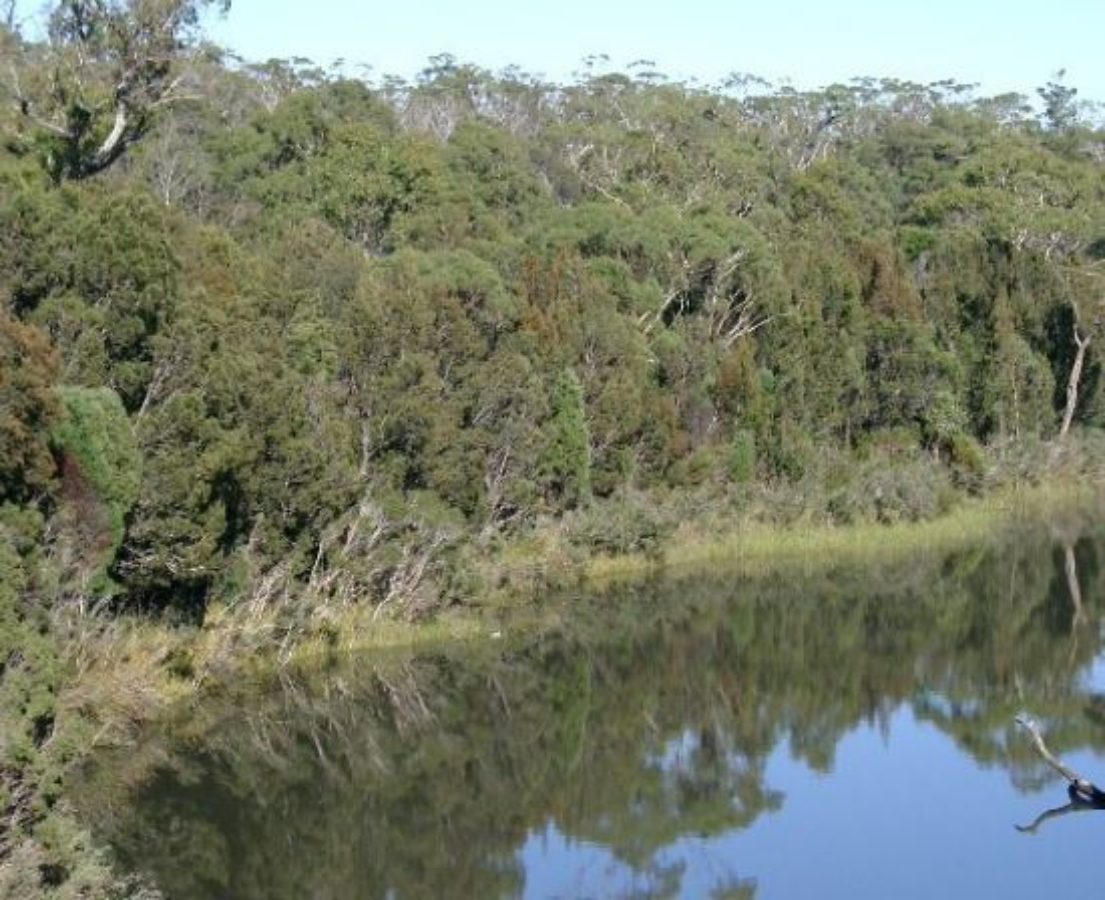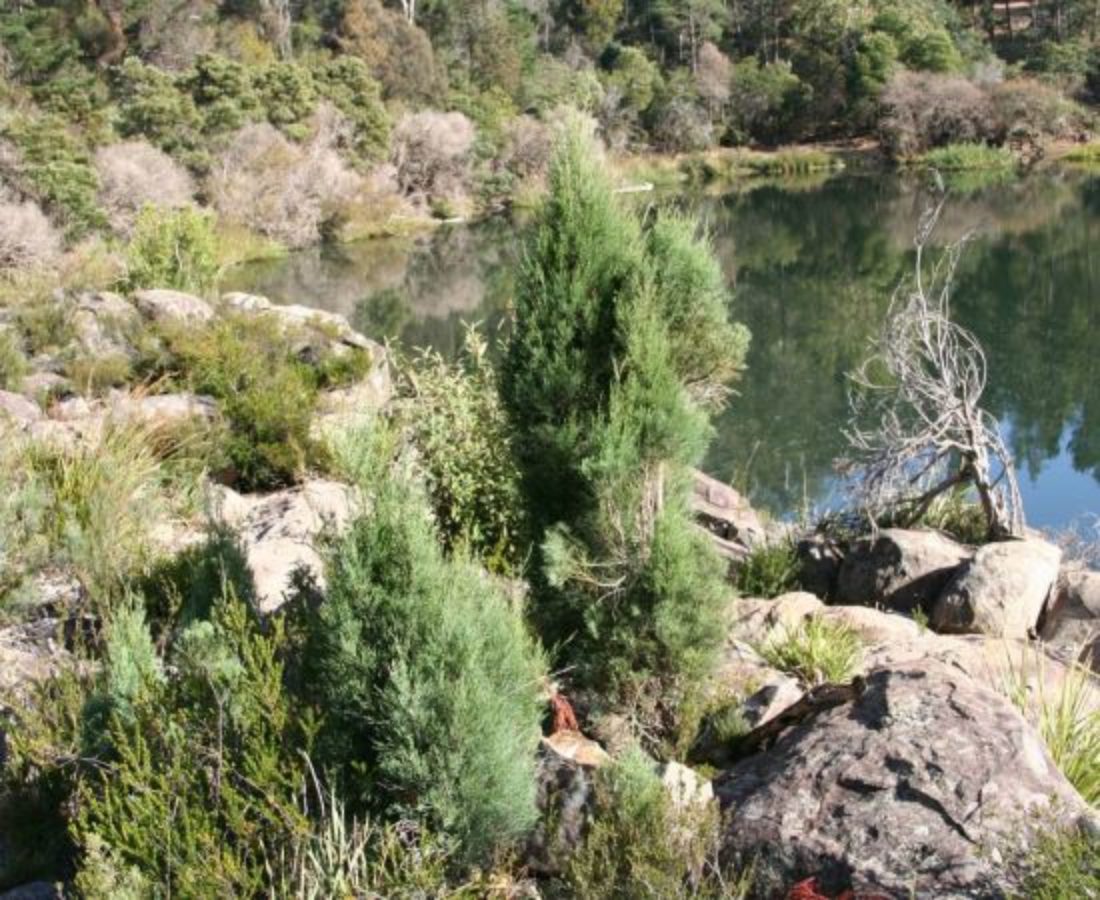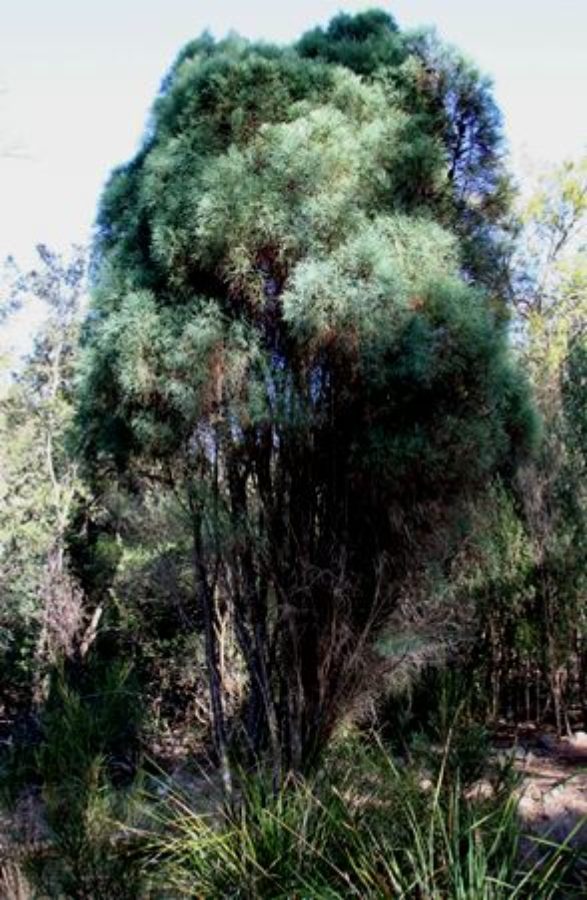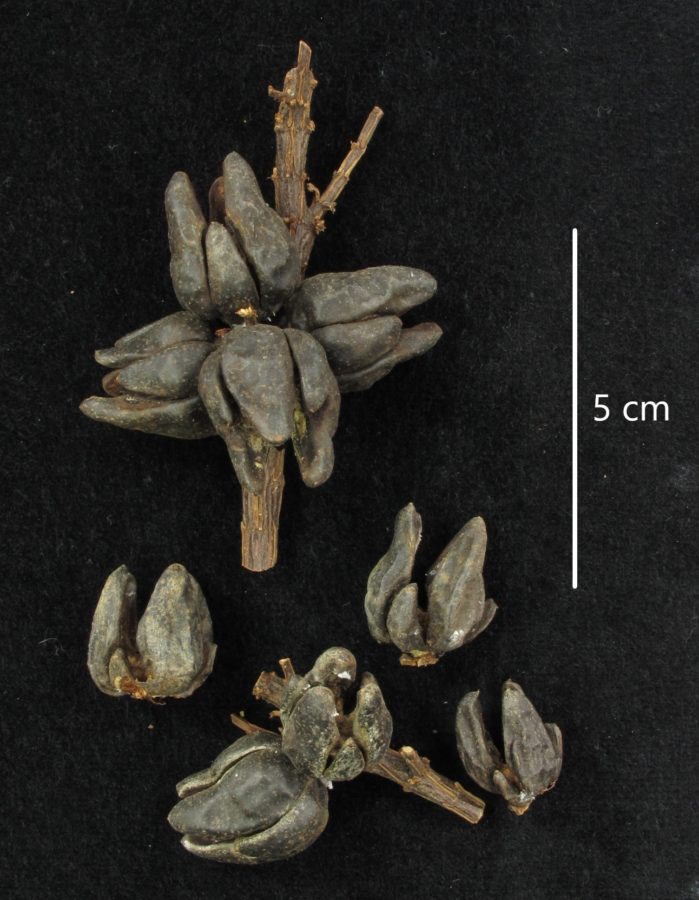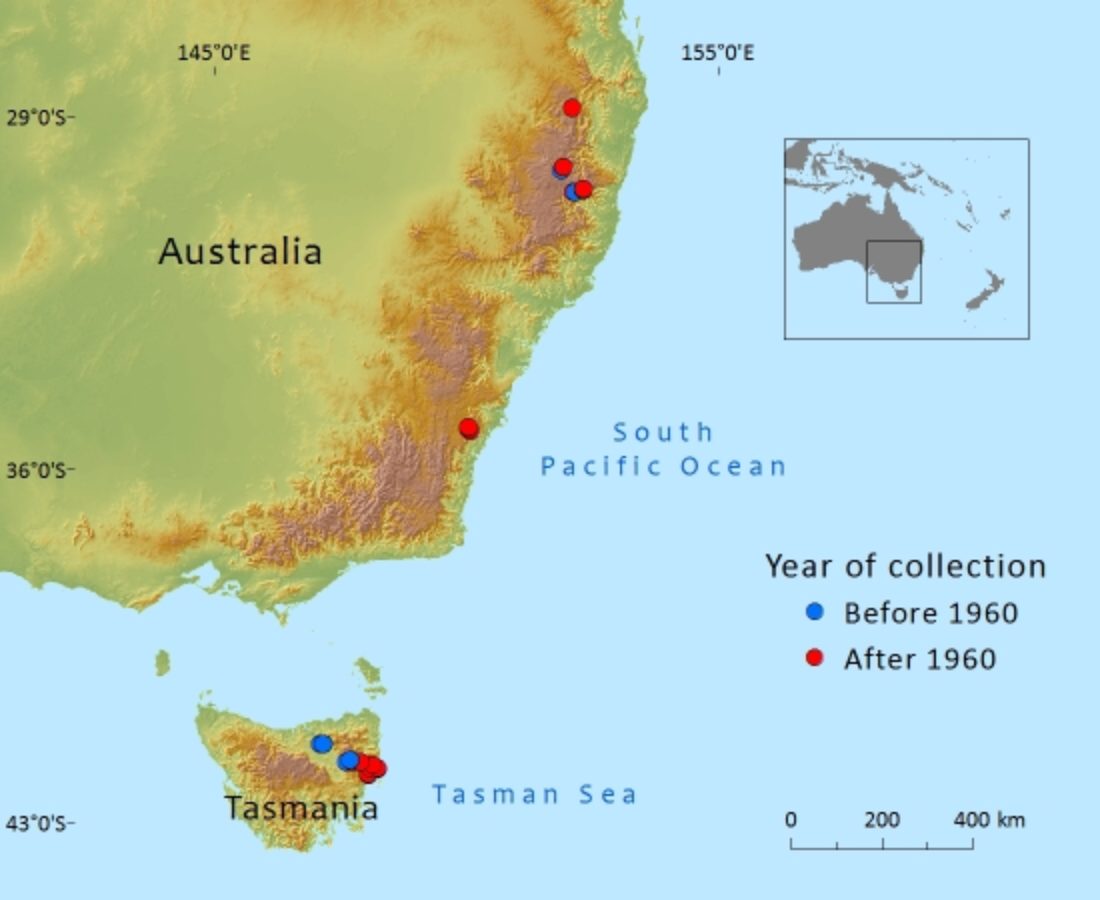Cupressaceae
Callitris oblonga
Endemic to Australia where it occurs on the mainland and Tasmania. Threats include forest clearance, fire, grazing, invasive species and soil erosion.
References and further reading
- Briggs, J.D. & Leigh, J.H. (1988). Rare or threatened Australian plants. CSIRO Publications, Melbourne, Australia.
- Clarke, P.J., Knox, K., Campbell, M. & Copeland, L. (2009). Post-fire recovery of woody plants in the New England Tableland Bioregion. Cunninghamia 11(2): 221–239.
- Farjon, A. (2005). A Monograph of Cupressaceae and Sciadopitys. The Royal Botanic Gardens, Kew.
- Harden, G.J. (ed.). (1990). Flora of New South Wales: Vol.1. New South Wales University Press, Sydney.
- Harris, S. & Kirkpatrick, J.B. (1991). The distributions, dynamics and ecological differentiation of Callitris species in Tasmania. Australian Journal of Botany 39(3): 187–202.
- Kirkpatrick, J. (1989). The conservation and reservation status of Tasmanian higher plants. Department of Parks, Wildlife and Heritage, Hobart.
- McCarthy, P. (ed.). (1998). Flora of Australia. Vol. 48 Ferns, Gymnosperms and Allied Groups. CSIRO, Melbourne.
- Nadolny, C. & Benson, J. (1993). The biology and management of the Pygmy Cypress Pine (Callitris oblonga) in NSW. Species Management Report No. 7. New South Wales National Parks and Wildlife Service, Sydney.
- NSW Scientific Committee (2008). Montane peatlands and swamps of the New England Tableland, NSW North Coast, Sydney Basin, South East Corner, South Eastern Highlands and Australian Alps bioregions - endangered ecological community listing NSW Scientific Committee - final determination. Sydney Available at: http://www.environment.nsw.gov.au/determinations/MontanePeatlandsEndSpListing.htm.
- Thomas, P. (2013). Callitris oblonga. In: IUCN 2013. IUCN Red List of Threatened Species. Version 2013.1. <www.iucnredlist.org>. Downloaded on 05 July 2013.
- Threatened Species Scientific Committee (2007). Eucalyptus ovata - Callitris oblonga (Black Gum) forest (Advice to the Minister for the Environment and Water Resources from the Threatened Species Scientific Committee (TSSC) on Amendments to the List of Ecological Communities under the Environment Protection and Biodiversity Conservation Act 1999 (EPBC Act)). Canberra Available at: http://www.environment.gov.au/biodiversity/threatened/communities/e-ovata.html#criterion-1.
- Threatened Species Unit (2004). Draft Flora Recovery Plan: Eucalyptus ovata - Callitris oblonga Community 2004–2008. Department of Primary Industries, Water and Environment, Hobart.
- Zacharek, A. (2000). Community recovery plan Eucalyptus ovata-Callitris oblonga forest 2000–2004. Department Primary Industries, Water and Environment, Hobart.
